|
Books Should Be Free Loyal Books Free Public Domain Audiobooks & eBook Downloads |
|
|
Books Should Be Free Loyal Books Free Public Domain Audiobooks & eBook Downloads |
|
History Books |
|---|
|
Book type:
Sort by:
View by:
|
By: Marcus Vitruvius Pollio (75 BC - c. 15 BC) | |
|---|---|
 Ten Books on Architecture
Ten Books on Architecture
On Architecture is a treatise on architecture written by the Roman architect Vitruvius and dedicated to his patron, the emperor Caesar Augustus as a guide for building projects. The work is one of the most important sources of modern knowledge of Roman building methods as well as the planning and design of structures, both large (aqueducts, buildings, baths, harbours) and small (machines, measuring devices, instruments). He is also the prime source of the famous story of Archimedes and his bath-time discovery. | |
By: Margaret Nevinson (1858-1932) | |
|---|---|
 Workhouse Characters
Workhouse Characters
In 1904, Margaret Nevinson, a respectable lady and active suffragette, joined the board of guardians in Hampstead Heath. The guardians had responsibility over the parish workhouse. In the UK, before the 1930s, one could not receive welfare assistance unless he or she entered the workhouse. A house for which one had to work. The conditions were so poor, sometimes even poorer then conditions in prison. The workhouse inspired many novels, the most famous is Oliver Twist. This collection of short stories is about the horrors Margaret saw, chiefly about things women had to endure... | |
By: Margaret Sanger (1879-1966) | |
|---|---|
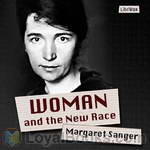 Woman and the New Race
Woman and the New Race
Margaret Sanger was an American sex educator and nurse who became one of the leading birth control activists of her time, having at one point, even served jail time for importing birth control pills, then illegal, into the United States. Woman and the New Race is her treatise on how the control of population size would not only free women from the bondage of forced motherhood, but would elevate all of society. The original fight for birth control was closely tied to the labor movement as well as the Eugenics movement, and her book provides fascinating insight to a mostly-forgotten turbulent battle recently fought in American history. | |
 Margaret Sanger; an autobiography
Margaret Sanger; an autobiography
Margaret Sanger, an advocate for birth control rights, chronicles the story of her struggles, including her times in jail and in exile, in order to legalize birth control options for women. She details the uphill battles of not only convincing lawmakers, but of doctors as well. Her relentless pursuit is told against the backdrop of courtrooms, her personal life, and her travels across the globe, giving a glimpse into the world during and post-WW I. This riveting account is a must read for those interested in a key moment in woman’s history and reform. | |
By: Margaret Wilson (1882-1973) | |
|---|---|
 Able McLaughlins
Able McLaughlins
The Able McLaughlins won the Pulitzer Prize for a novel in 1924 in Margaret Wilson's debut work. Aptly described as "Little House on the Prairie - but for adults" the novel follows a group of Scottish families who pioneer the Iowa prairie in the 1860’s. The main storyline concerns Wully, the eldest McLaughlin son, who returns home from the Civil War to find that his sweetheart, Chirstie, has experienced an unspeakable tragedy that will profoundly affect the couple's lives. Their story is one of shame and honor, secrets and guilt, fear and loathing, revenge and forgiveness... | |
By: Marguerite Henry (1902-1997) | |
|---|---|
 Gaudenzia, Pride of the Palio
Gaudenzia, Pride of the Palio
Each summer, in the ancient hill town of Siena, Italy, there erupts one of the most extraordinary, exciting, and dangerous horse races in the world— the Palio. So furious is the rivalry that it is often said the Palio is more battle than race, and that "Fate is the Queen of the Palio." This magnificent book is a true story of the Palio —a thrilling, heart-stirring tale of a boy and a beautiful half-Arabian mare who won undying fame. Marguerite Henry tells—as only she can—how the life of Giorgio Terni, a boy of the Maremma marshes, became linked in strange and dramatic fashion with that of the cart horse Gaudenzia, whose Arabian blood brought her into the contest of the Palio... | |
By: Marguerite Stockman Dickson | |
|---|---|
 Vocational Guidance for Girls
Vocational Guidance for Girls
VOCATIONAL GUIDANCE FOR GIRLSBy MARGUERITE STOCKMAN DICKSONA FOREWORDFortunate are we to have from the pen of Mrs. Dickson a book on the vocational guidance of girls. Mrs. Dickson has the all-round life experiences which give her the kind of training needed for a broad and sympathetic approach to the delicate, intricate, and complex problems of woman's life in the swiftly changing social and industrial world. Mrs. Dickson was a teacher for seven years in the grades in the city of New York. She then became the partner of a superintendent of schools in the business of making a home... | |
By: Marie Belloc Lowndes (1868-1947) | |
|---|---|
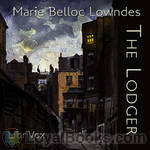 The Lodger
The Lodger
The Lodger by Marie Belloc Lowndes was inspired by the Jack the Ripper murders. An older couple, the Buntings, are forced to take in lodgers to make ends meet. They are on the verge of starvation when a mysterious man, Mr. Sleuth, appears at their door and asks for lodging, paying in advance. However, when the murders of young women in London attributed to a man known only as “The Avenger” continue, the Buntings, particularly Mrs. Bunting, grow fearful that their lodger may be the murderer. | |
By: Mark Twain (1835-1910) | |
|---|---|
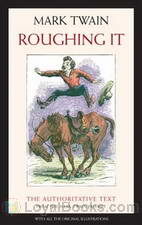 Roughing It
Roughing It
The semiautobiographical travel memoir records Twain’s, more or less, personal journey across the Wild West in search of adventure while exploring variable locations. Accompanying his brother on what becomes a trip of a lifetime, the young Samuel Clemens finds himself in many different vocational roles as he explores and observes the magnificence of the American West. Not refraining from the usual social commentary, Twain directs criticism on various social and moral issues which he approaches through his sly and witty style... | |
 Extracts from Adam's Diary
Extracts from Adam's Diary
Get the true story of Adam and Eve, straight from the source. This humorous text is a day-to-day account of Adam’s life from happiness in the “GARDEN-OF-EDEN” to their fall from grace and the events thereafter. Learn how Eve caught the infant Cain, and Adam takes some time to learn exactly what it is. | |
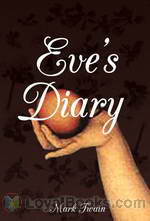 Eve's Diary
Eve's Diary
Eve's Diary is a comic short story by Mark Twain. It was first published in the 1905 Christmas issue of the magazine Harper's Bazaar, and in book format in June 1906 by Harper and Brothers publishing house. It is written in the style of a diary kept by the first woman in the Judeao-Christian creation myth, Eve, and is claimed to be "translated from the original MS." The "plot" of this novel is the first-person account of Eve from her creation up to her burial by, her mate, Adam, including meeting and getting to know Adam, and exploring the world around her, Eden... | |
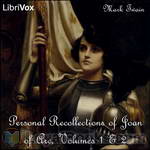 Personal Recollections of Joan of Arc, Volumes 1 & 2
Personal Recollections of Joan of Arc, Volumes 1 & 2
Mark Twain’s work on Joan of Arc is titled in full “Personal Recollections of Joan of Arc, by the Sieur Louis de Conte.” De Conte is identified as Joan’s page and secretary. For those who’ve always wanted to “get behind” the Joan of Arc story and to better understand just what happened, Twain’s narrative makes the story personal and very accessible. The work is fictionally presented as a translation from the manuscript by Jean Francois Alden, or, in the words of the published book, “Freely Translated out of the Ancient French into Modern English from the Original Unpublished Manuscript in the National Archives of France... | |
 The Treaty with China
The Treaty with China
"A good candidate for 'the most under-appreciated work by Mark Twain' would be 'The Treaty With China,' which he published in the New York Tribune in 1868. This piece, which is an early statement of Twain's opposition to imperialism and which conveys his vision of how the U.S. ought to behave on the global stage, has not been reprinted since its original publication until now." (the online, open-access "Journal of Transnational American Studies" published it in the spring, 2010). | |
 Fenimore Cooper's Literary Offences
Fenimore Cooper's Literary Offences
This is Mark Twain's vicious and amusing review of Fenimore Cooper's literary art. It is still read widely in academic circles. Twain's essay, Fenimore Cooper's Literary Offenses (often spelled "Offences") (1895), particularly criticized The Deerslayer and The Pathfinder. Twain wrote at the beginning of the essay: 'In one place in Deerslayer, and in the restricted space of two-thirds of a page, Cooper has scored 114 offenses against literary art out of a possible 115. It breaks the record.' Twain listed 19 rules 'governing literary art in domain of romantic fiction', 18 of which Cooper violates in The Deerslayer. (Introduction by Wikipedia and John Greenman) | |
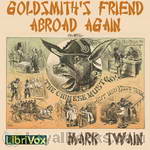 Goldsmith's Friend Abroad Again
Goldsmith's Friend Abroad Again
This satire on the U.S.A.'s myth of being the "Home of the Oppressed, where all men are free and equal", is unrelenting in its pursuit of justice through exposure. It draws a scathingly shameful portrait of how Chinese immigrants were treated in 19th century San Francisco. (Introduction by John Greenman) | |
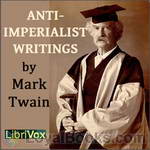 Anti-imperialist writings
Anti-imperialist writings
This audiobook is a collection of Mark Twain's anti-imperialist writings (newspaper articles, interviews, speeches, letters, essays and pamphlets). | |
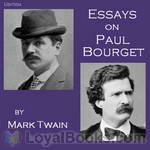 Essays on Paul Bourget
Essays on Paul Bourget
Collection of short essays concerning French novelist and critic Paul Bourget. Included: "What Paul Bourget Thinks of Us" and "A Little Note to M. Paul Bourget". | |
 Mark Twain: The Complete Interviews
Mark Twain: The Complete Interviews
This collection of the 258 known, publicly-printed interviews of Mark Twain was compiled by Gary Scharnhorst and published by the University of Alabama Press. The interviews are in the Public Domain, and our thanks go to Gary Scharnhorst and the University of Alabama for making them available for this Public Domain audio recording. They were compiled in the University of Alabama Press book entitled "Mark Twain: The Complete Interviews" and are arranged, chronologically, from Twain's first authenticated interview in 1871, to his last interview in 1910... | |
 Mark Twain's Speeches, Part 2
Mark Twain's Speeches, Part 2
This collection of the 195 known, publicly-printed speeches of Mark Twain was compiled by Paul Fatout and published by the University of Iowa Press. The speeches are in the Public Domain, and our thanks go to the University of Iowa for making them available for this Public Domain audio recording. They were compiled in the University of Iowa Press book entitled "Mark Twain Speaking" and are arranged, chronologically, from Twain's first authenticated public speech in 1864, to his last speech, exactly 7 months before he died. Extensive analysis , notes, appendix and index are included in the printed work. - Summary by John Greenman | |
 Europe and Elsewhere
Europe and Elsewhere
This collection of articles came from Mark Twain's travels and experiences abroad. While many had been previously published, there also were many that had never before seen the light of day...which one reviewer said had never been Twain's intent for them, having consigned them to obscurity. With introductory essays by Brander Matthews and Albert Bigelow Paine, the book paints a clear picture of the complexity and wide variety of Samuel L. Clemens' thinking, where it originated and how it developed. | |
 Christian Science
Christian Science
Christian Science is a 1907 collection of essays Mark Twain wrote about Christian Science, beginning with an article that was published in Cosmopolitan in 1899. Although Twain was interested in mental healing and the ideas behind Christian Science, he was hostile towards its founder, Mary Baker Eddy . He called her, according to American writer Caroline Fraser, "[g]rasping, sordid, penurious, famishing for everything she sees—money, power, glory—vain, untruthful, jealous, despotic, arrogant, insolent, pitiless where thinkers and hypnotists are concerned, illiterate, shallow, incapable of reasoning outside of commercial lines, immeasurably selfish... | |
By: Martha Finley (1828-1909) | |
|---|---|
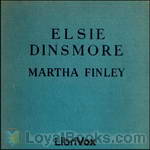 Elsie Dinsmore
Elsie Dinsmore
Elsie, young and motherless, has never met her father and is being raised by her father’s family. As a strong Christian, she has many trials within the unbelieving family. Her greatest comforts are her faith and her mammy, Chloe. Finally, her father returns home. Will her father love her? Will her father learn to love Jesus? | |
 Holidays at Roselands
Holidays at Roselands
This is the second book of the much loved Elsie Dinsmore series and starts where the first book left off. Elsie is still recuperating from her weakness, with her kind and indulgent father by her side.The story revolves around how a strong bond of love and understanding takes root between the father and daughter, as they holiday at Roselands, and visit exciting places, with some of our favorite friends from the first book, Mr. Travilla, Adelaide, Chloe, Lora and the others. | |
 Elsie's Children
Elsie's Children
This book continues the delightful "Elsie Dinsmore" series. Elsie's children, introduced in the previous volume, live life, grow up, and encounter various problems of their own. Additional Proof Listeners: AlaynaMay & Rachel. | |
 Elsie's Widowhood
Elsie's Widowhood
The seventh in the Elsie Dinsmore series, this book begins with the death of Elsie's beloved husband. As Elsie learns to live in widowhood, the story shifts to the lives of those most precious to her - her children and extended family. | |
 Mildred at Home: With Something About Her Relatives and Friends
Mildred at Home: With Something About Her Relatives and Friends
Book 5 of the story of Mildred Keith by Martha Finley. We join Mildred as she settles into home life as wife and mother. We also see the rest of the Keith children begin to make starts of their own - some near to home, and others far away and perhaps lost forever. The Dinsmore cousins continue to be part of the story as well. - Summary by Michelle Hannah | |
By: Mary A. Hamilton | |
|---|---|
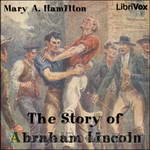 The Story of Abraham Lincoln
The Story of Abraham Lincoln
In this biography for young adults, Mary A. Hamilton gives a British person’s perspective on the 16th President of the United States. A glowing tribute to “Honest Abe”, the author traces Lincoln’s ancestral roots and recounts his birth in Kentucky, his youth in Indiana, his adult life in Illinois and his years in the White House. She also provides a good background on the causes and course of the American Civil War. Hamilton is not always historically precise. For example, she erroneously names Jefferson Davis as the Southern Democratic candidate for president running against Lincoln and Douglas in 1860 rather than John C... | |
By: Mary A. Hollings (1869-1926) | |
|---|---|
 Europe in Renaissance and Reformation 1453-1660
Europe in Renaissance and Reformation 1453-1660
In a small space the Oxford-educated historian, Mary Hollings, provides a panoramic view of a tumultuous age. We meet Cesare Borgia and Savonarola, the universal spider, Louis XI, Henry IV, France's best-beloved king, Sweden’s wise and courageous Queen Christina, and great generals, like Albrecht von Wallenstein and Gustavus Adolphus. The twin ideals of imperial unity and of one true church led to two centuries of unremitting warfare from the fertile plains of Italy, through the alpine passes, across France, the Netherlands, the German states, to Poland and Bohemia... | |
By: Mary Antin | |
|---|---|
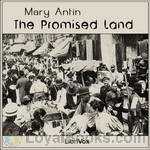 The Promised Land
The Promised Land
Being a Jew in Russia at the end of the 19th century was not easy at all. Jews were persecuted because of their religion. So the Jews found comfort in their ancient traditions. When Mary Antin’s father decided that keeping to his traditions did not suit him anymore, he found no place in Russia. So he emigrated to America with his family. Life was not easy, though as a child, Mary describes life in Boston as almost perfect. A smart and dignified girl, Mary takes the good things in anything and writes her autobiography with a smile. | |
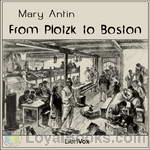 From Plotzk to Boston
From Plotzk to Boston
An intensely personal account of the immigration experience as related by a young Jewish girl from Plotzk (a town in the government of Vitebsk, Russia). Mary Antin, with her mother, sisters, and brother, set out from Plotzk in 1894 to join their father, who had journeyed to the “Promised Land” of America three years before. Fourth class railroad cars packed to suffocation, corrupt crossing guards, luggage and persons crudely “disinfected” by German officials who feared the cholera, locked “quarantine” portside, and, finally, the steamer voyage and a famiily reunited... | |
By: Mary Chesnut | |
|---|---|
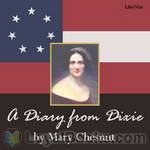 A Diary from Dixie
A Diary from Dixie
Mary Boykin Miller Chesnut, a well-educated South Carolina woman who was the wife of a Confederate general, kept extensive journals during the Civil War. Mrs. Chesnut moved in elite circles of Southern society and had a keen interest in politics. Her diary is both an important historic document and, due to her sharp wit and often irreverent attitude, a fascinating window into Southern society of the time. This recording is of the first published edition of the diary, compiled from Mrs. Chesnut's revisions of her original journals. | |
By: Mary Elizabeth Braddon (1835-1915) | |
|---|---|
 Christmas Hirelings
Christmas Hirelings
It is the Christmas season once again and things are, well, boring for the adults at Penlyon Castle. "...if somehow or other I had a pack of children belonging to me, I would keep Christmas with the best — keep it as it ought to be kept." says Sir John. His good friend Mr. Danby has the perfect solution - to hire some children to spend Christmas! Thus, the arrival of Lassie, Laddie, and little Moppet - Christmas and Sir John may never be the same again. Proof Listener - hallejk | |
 Sons of Fire
Sons of Fire
"He was a stranger in Matcham, a 'foreigner' as the villagers called such alien visitors. He had never been in the village before, knew nothing of its inhabitants or its surroundings, its customs, ways, local prejudices, produce, trade, scandals, hates, loves, subserviencies, gods, or devils , and yet henceforward he was to be closely allied with Matcham, for a certain bachelor uncle had lately died and left him a small estate within a mile of the village." | |
By: Mary Hazel Snuff | |
|---|---|
 Study Of Army Camp Life During American Revolution
Study Of Army Camp Life During American Revolution
Housing, Food, Clothing, Health, Sanitation, Recreation, Religion, Duties, Discipline. A thesis submitted in partial fulfillment of the requirements for the degree of master of arts in history in the Graduate School of the University of Illinois 1918. - Summary by David Wales | |
By: Mary Hazelton Blanchard Wade (1860-1936) | |
|---|---|
 Our Little Russian Cousin
Our Little Russian Cousin
This delightful little book is one of many titles in The Little Cousin Series. The author narrates details in the life of a fictional Russian girl named Petrovna. In doing so she introduces children to Russian life and culture at the turn of the 20th century. - Summary by Marie Christian | |
By: Mary Huestis Pengilly | |
|---|---|
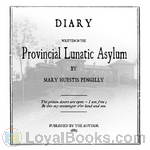 Diary Written in the Provincial Lunatic Asylum
Diary Written in the Provincial Lunatic Asylum
Mary Pengilly was taken to a Lunatic Asylum by her sons where she kept a diary, which this book is taken from. Mary records the harsh conditions and treatments received at the hands of the nurses during her stay. Once Mary is released she takes it upon herself to make the authorities aware of the situation at the Provincial Lunatic Asylum. | |
By: Mary Hunter Austin (1868-1934) | |
|---|---|
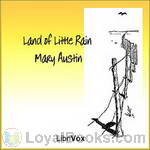 The Land of Little Rain
The Land of Little Rain
The Land of Little Rain is a book of sketches which portray the high desert country of southern California, where the Sierras descend into the Mojave Desert. Mary Austin finds beauty in the harsh landscape: "This is the sense of the desert hills--that there is room enough and time enough. . . The treeless spaces uncramp the soul." Her story begins with the water trails that lead toward the few life giving springs--the way marked for men by ancient Indian pictographs. Life and death play out at these springs... | |
By: Mary Johnston (1870-1936) | |
|---|---|
 To Have And To Hold
To Have And To Hold
When I first started reading this book, I thought it to be a historical romance novel. As I read further, I pondered whether it might be a sea-faring story. Reading still further, I determined it to be an adventure story. Alas, it is all three. To Have And To Hold, written by Mary Johnston was the bestselling novel of 1900. The story takes place in colonial Jamestown during the 1600’s. Captain Ralph Percy, an English soldier turned Virginian explorer buys a wife - little knowing that she is the escaping ward of King James I... | |
 Chronicles of America Volume 05 - Pioneers of the Old South
Chronicles of America Volume 05 - Pioneers of the Old South
In this remarkably detailed and sweeping fifth installment, Mary Johnston takes us from discoveries and settlements to the evolution into the first colonies, specifically Virginia, Maryland, North and South Carolina, and finally Georgia. Group: Chronicles of America Series | |
By: Mary Raymond Shipman Andrews (1860-1936) | |
|---|---|
 Yellow Butterflies
Yellow Butterflies
The title of this historical fiction could as well have been "A Soldier’s Mother" or “An Unknown Soldier”. There are indeed butterflies, and there is a small boy who grows into a fine, strapping young man who goes to war. But this moving novella centers squarely on the young man's mother, her love for him and her abiding faith. | |
By: Mary Roberts Rinehart (1876-1958) | |
|---|---|
 Tenting To-Night; A Chronicle Of Sport And Adventure In Glacier Park And The Cascade Mountains
Tenting To-Night; A Chronicle Of Sport And Adventure In Glacier Park And The Cascade Mountains
This is the second of two travelogues published by Mary Roberts Rinehart (1876-1958). Both deal with Glacier National Park, and this book also deals with the Cascade Mountains (The other is entitled Through Glacier Park). Rinehart wrote hundreds of short stories, poems, travelogues and articles, though she is most famous for her mystery stories. The region that became Glacier National Park was first inhabited by Native Americans and upon the arrival of European explorers, was dominated by the Blackfeet in the east and the Flathead in the western regions. | |
 Kings, Queens and Pawns: An American Woman at the Front
Kings, Queens and Pawns: An American Woman at the Front
A personal account of the American author's visit to Europe in January 1915 while a war correspondent in Belgium for The Saturday Evening Post. She writes: "War is not two great armies meeting in a clash and frenzy of battle. It is much more than that. War is a boy carried on a stretcher, looking up at God's blue sky with bewildered eyes that are soon to close; war is a woman carrying a child that has been wounded by a shell; war is spirited horses tied in burning buildings and waiting for death; war is the flower of a race, torn, battered, hungry, bleeding, up to its knees in icy water; war is an old woman burning a candle before the Mater Dolorosa for the son she has given... | |
By: Mary Rowlandson (c.1637-1711) | |
|---|---|
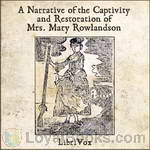 A Narrative of the Captivity and Restoration of Mrs. Mary Rowlandson
A Narrative of the Captivity and Restoration of Mrs. Mary Rowlandson
This is the story of Mary Rowlandson’s capture by American Indians in 1675. It is a blunt, frightening, and detailed work with several moments of off-color humor. Mary, the wife of a minister, was captured by Natives during King Philips War while living in a Lancaster town, most of which was decimated, and the people murdered. See through her eyes, which depict Indians as the instruments of Satan. Her accounts were a best-seller of the era, and a seminal work, being one of the first captivity narratives ever published by a woman... | |
By: Mary Seacole (1805-1881) | |
|---|---|
 Wonderful Adventures of Mrs. Seacole in Many Lands
Wonderful Adventures of Mrs. Seacole in Many Lands
I should have thought that no preface would have been required to introduce Mrs. Seacole to the British public, or to recommend a book which must, from the circumstances in which the subject of it was placed, be unique in literature. If singleness of heart, true charity, and Christian works; if trials and sufferings, dangers and perils, encountered boldly by a helpless woman on her errand of mercy in the camp and in the battle-field, can excite sympathy or move curiosity, Mary Seacole will have many friends and many readers... | |
By: Mary Stoyell Stimpson | |
|---|---|
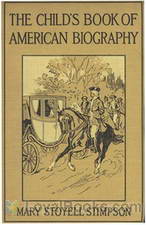 The Child's Book of American Biography
The Child's Book of American Biography
In every country there have been certain men and women whose busy lives have made the world better or wiser. The names of such are heard so often that every child should know a few facts about them. It is hoped the very short stories told here may make boys and girls eager to learn more about these famous people. (from the Forward of the text) | |
By: Mary Wollstonecraft (1759-1797) | |
|---|---|
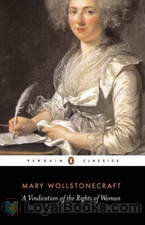 A Vindication of the Rights of Woman
A Vindication of the Rights of Woman
Regarded as the one of the earliest examples of feminist philosophy, A Vindication of the Rights of Woman is written as a direct response to Charles Maurice de Talleyrand-Périgord, a French politician who delivered a report to the French National Assembly suggesting that women should only receive domestic education and additionally encourages women to stay clear of political affairs. In her treatise, Wollstonecraft avidly criticizes this inadequate perception of women as an inferior sex and attacks social inequality, while also arguing for women’s rights in the hope of redefining their position both in society and in marriage... | |
 Original Stories from Real Life
Original Stories from Real Life
Mary Wollstonecraft was one of the early promoters of gender equality long before other crusaders took up the cause. She is perhaps best known for her books, “A Vindication of the Rights of Women” and “A Vindication of the Rights of Men” . But she also wrote widely on education and used fiction formats to promote her progressive views. This book using the genre of didactic children’s stories, was written the same year as her “Mary: A Fiction” 1788, but was first published anonymously... | |
By: Matthew Arnold (1822-1888) | |
|---|---|
 Culture and Anarchy
Culture and Anarchy
Culture and Anarchy is a series of periodical essays by Matthew Arnold, first published in Cornhill Magazine 1867-68 and collected as a book in 1869. The preface was added in 1875. Arnold's famous piece of writing on culture established his High Victorian cultural agenda which remained dominant in debate from the 1860s until the 1950s. According to his view advanced in the book, "Culture [...] is a study of perfection". He further wrote that: "[Culture] seeks to do away with classes; to make the best that has been thought and known in the world current everywhere; to make all men live in an atmosphere of sweetness and light [... | |
By: May Agnes Fleming (1840-1880) | |
|---|---|
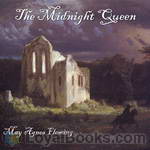 The Midnight Queen
The Midnight Queen
May Agnes Fleming is renowned as Canada's first best-selling novelist. She wrote 42 novels, many of which have only been published posthumely.The Midnight Queen is set in London, in the year of the plague 1665. Sir Norman Kingsley visits the soothsayer "La Masque" who shows him the vision of a beautiful young lady. Falling madly in love with her, he is astonished to find her only a short time later and saves her from being buried alive. He takes her home to care for her, but while he fetches a doctor, she disappears. Sir Kingsley and his friend Ormistan embark on an adventure to solve the mystery of the young lady - will they ever find her again? | |
By: May Kellogg Sullivan | |
|---|---|
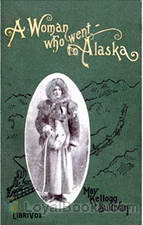 A Woman Who Went to Alaska
A Woman Who Went to Alaska
Alaska has only been a state since 1959, and the breathtaking terrain remains mostly unspoiled and natural. In modern times, many of us have had the pleasure of visiting Alaska via a luxurious cruise ship, where we enjoyed gourmet meals, amazing entertainment, and a climate-controlled environment. It's easy to also book a land package that enables you to see more of the country by train.Imagine what it was like to visit the same wild, untamed countryside in 1899. Instead of boarding a sleek, stylish cruise ship, you travel for weeks on a steamer... | |
By: May Sinclair (1863-1946) | |
|---|---|
 New Idealism
New Idealism
The genius of May Sinclair lies in her brilliant bridging of the Victorian and the modern eras, in her determination never to become ossified in an outdated way of thought or of Art. Though a generation older than the famous literati of the postwar era, she clearly perceived what was worth saving of the old and what was worth embracing of the new. This is clear, of course, in her remarkable fiction, particularly in the astonishing “Life and Death of Harriet Frean,” “Mary Olivier,” and “Tree of Heaven,” in which she broke new ground in psychological and stream-of-consciousness fiction... | |
By: Meriel Buchanan (1886-1959) | |
|---|---|
 Petrograd, the City of Trouble, 1914-1918
Petrograd, the City of Trouble, 1914-1918
The author of this work was the daughter of the British ambassador to Russia. She was in St. Petersburg from before World War I to after the Bolshevik Revolution, leaving in January 1918. Rather than a dry retelling of the history of this period, the author gives a more personal view of the events, as she lived through them. - Summary by TriciaG | |
By: Meriwether Lewis (1774-1809) | |
|---|---|
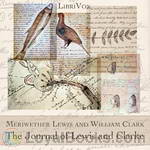 The Journal of Lewis and Clarke (1840)
The Journal of Lewis and Clarke (1840)
"The expedition of Messrs. Lewis and Clarke, for exploring the river Missouri, and the best communication from that to the Pacific Ocean, has had all the success which could be expected. They have traced the Missouri nearly to its source; descended the Columbia to the Pacific Ocean, ascertained with accuracy the Geography, of that interesting communication across the continent; learned the character of the country, its commerce and inhabitants; and it is but justice to say that Messrs. Lewis and Clarke, and their brave companions, have, by this arduous service, deserved well of their country... | |
By: Mikhail Yurevich Lermontov (1814-1841) | |
|---|---|
 Hero of Our Time
Hero of Our Time
A Hero of Our Time is indeed a portrait, but not of one man. It is a portrait built up of all our generation's vices in full bloom. You will again tell me that a human being cannot be so wicked, and I will reply that if you can believe in the existence of all the villains of tragedy and romance, why wouldn't believe that there was a Pechorin? If you could admire far more terrifying and repulsive types, why aren't you more merciful to this character, even if it is fictitious? Isn't it because there's more truth in it than you might wish? | |
By: Mohandas Karamchand Gandhi | |
|---|---|
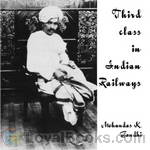 Third Class in Indian Railways
Third Class in Indian Railways
Mohandas Karamchand Gandhi (1869 – 1948) was the pre-eminent political and spiritual leader of India during the Indian independence movement. He was the pioneer of satyagraha — resistance to tyranny through mass civil disobedience. This philosophy was firmly founded upon ahimsa, or total nonviolence, and led India to independence and inspired movements for civil rights and freedom across the world. Gandhi is commonly known around the world as Mahatma Gandhi and in India also as Bapu. He is officially honoured in India as the Father of the Nation; his birthday, 2 October, is commemorated there as Gandhi Jayanti, a national holiday. | |
By: Moncure Daniel Conway (1832-1907) | |
|---|---|
 Autobiography Memories and Experiences, Volume 2
Autobiography Memories and Experiences, Volume 2
Moncure Daniel Conway was an American abolitionist, Unitarian, clergyman and author. This second volume of his autobiography covers the years from the US Civil War to roughly 1904. | |
By: Moses Maimonides (1138-1204) | |
|---|---|
 Guide for the Perplexed, Part One
Guide for the Perplexed, Part One
The Guide for the Perplexed by Mūsá ibn Maymūn is regarded as one of the most important works of Medieval Jewish thought. The book attempted to harmonize the philosophy of Aristotle with the Rabbinical teachings, but was regarded by many at the time as antithetical to Jewish theology, despite its earnest arguments in vindication of the ways of God. - Summary by Daniel Davison | |
By: Mrs. Cecil Hall | |
|---|---|
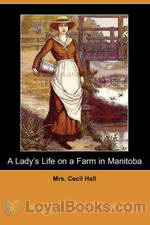 A Lady's Life on a Farm in Manitoba
A Lady's Life on a Farm in Manitoba
The nineteenth century was marked by intense colonization by countries like Britain, France, Portugal, Spain and the Netherlands. Initially, the pioneering efforts were made by men who battled unfamiliar terrain to create territories that they marked out as their own, while their wives, mothers, sisters and daughters kept the home and hearth in their native land. However, with travel becoming more common and family life assuming more importance, the women too began to travel to the four corners of the earth... | |
By: Mrs. Eugenia Dunlap Potts (1840-1912) | |
|---|---|
 Historic Papers on the Causes of the Civil War
Historic Papers on the Causes of the Civil War
While claiming to be historical papers on the causes of the United States Civil War, the author indulges in some Slavery Apologetics. An interesting view from a southern lady on what caused the war and why the south was the underdog. | |
By: Mrs. Philip Snowden (1881-1951) | |
|---|---|
 Political Pilgrim in Europe
Political Pilgrim in Europe
Written in the aftermath of Word War I, Viscountess Snowden recounts her travels in post war Europe in, as she describes it, "an attempt to do what one person might do, or at least attempt, to restore good feeling between the nations and the normal course of life as quickly as possible." An outspoken pacifist, socialist, and feminist who nonetheless strongly denounced the Bolsheviks, Snowden was a controversial and polarizing figure. whose views and observations offer a unique perspective on Europe in the '20s. - Summary by Ciufi Galeazzi | |